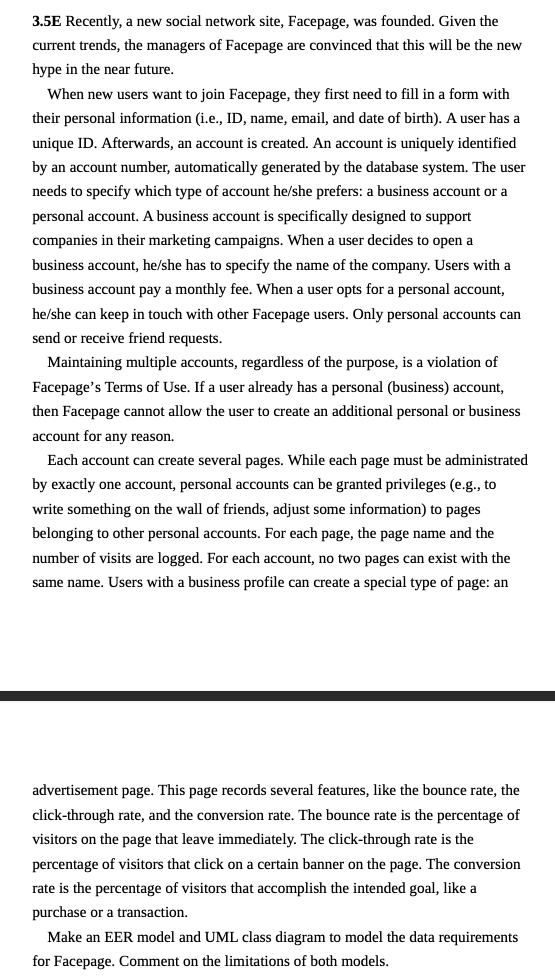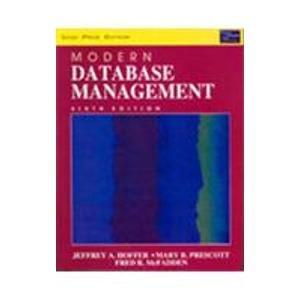
3.5E Recently, a new social network site, Facepage, was founded. Given the current trends, the managers of Facepage are convinced that this will be the new hype in the near future. When new users want to join Facepage, they first need to fill in a form with their personal information (i.e., ID, name, email, and date of birth). A user has a unique ID. Afterwards, an account is created. An account is uniquely identified by an account number, automatically generated by the database system. The user needs to specify which type of account he/she prefers: a business account or a personal account. A business account is specifically designed to support companies in their marketing campaigns. When a user decides to open a business account, he/she has to specify the name of the company. Users with a business account pay a monthly fee. When a user opts for a personal account, he/she can keep in touch with other Facepage users. Only personal accounts can send or receive friend requests. Maintaining multiple accounts, regardless of the purpose, is a violation of Facepage's Terms of Use. If a user already has a personal (business) account, then Facepage cannot allow the user to create an additional personal or business account for any reason. Each account can create several pages. While each page must be administrated by exactly one account, personal accounts can be granted privileges (e.g., to write something on the wall of friends, adjust some information) to pages belonging to other personal accounts. For each page, the page name and the number of visits are logged. For each account, no two pages can exist with the same name. Users with a business profile can create a special type of page: an advertisement page. This page records several features, like the bounce rate, the click-through rate, and the conversion rate. The bounce rate is the percentage of visitors on the page that leave immediately. The click-through rate is the percentage of visitors that click on a certain banner on the page. The conversion rate is the percentage of visitors that accomplish the intended goal, like a purchase or a transaction. Make an EER model and UML class diagram to model the data requirements for Facepage. Comment on the limitations of both models







